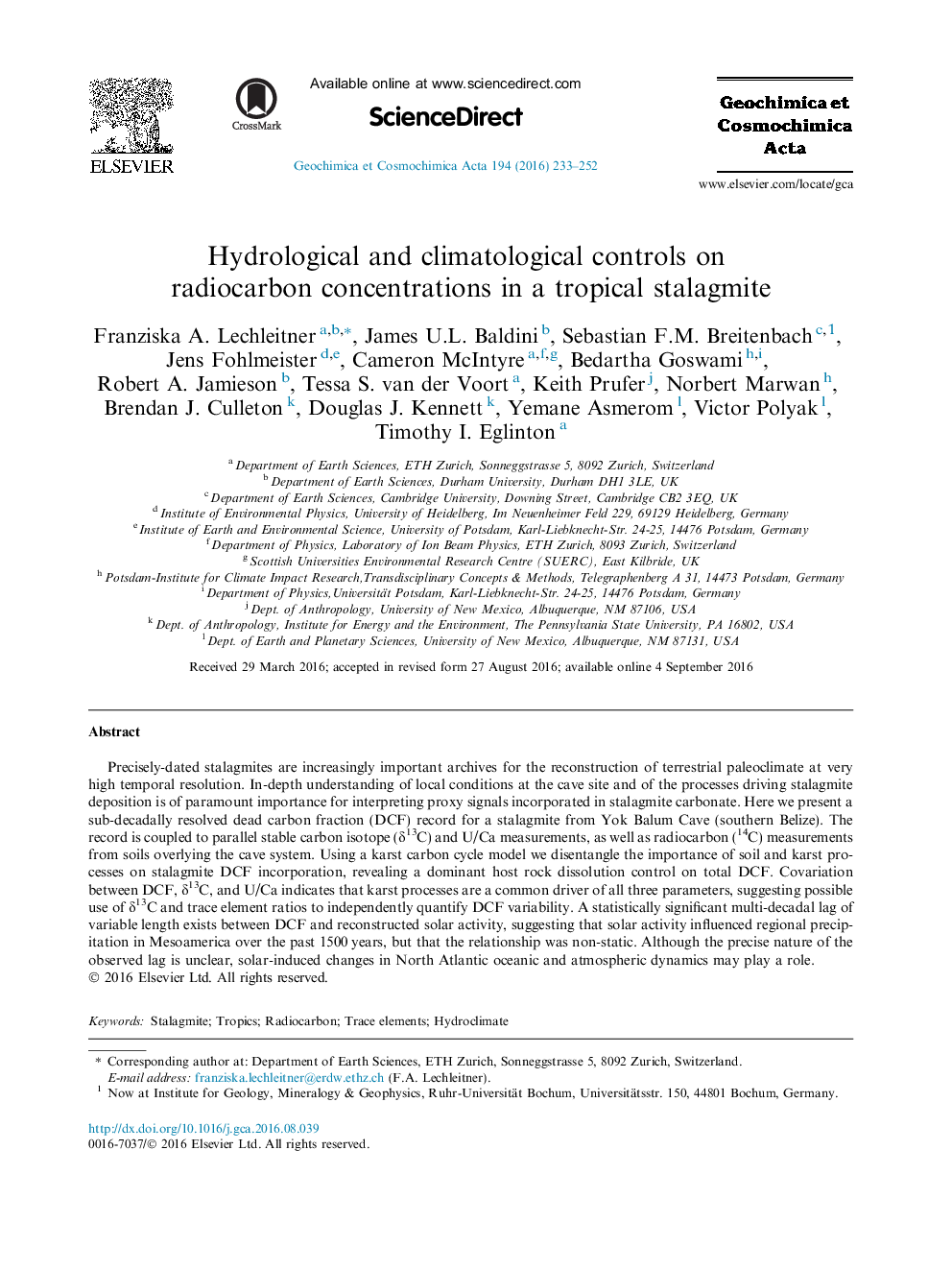| Article ID | Journal | Published Year | Pages | File Type |
|---|---|---|---|---|
| 6437163 | Geochimica et Cosmochimica Acta | 2016 | 20 Pages |
Precisely-dated stalagmites are increasingly important archives for the reconstruction of terrestrial paleoclimate at very high temporal resolution. In-depth understanding of local conditions at the cave site and of the processes driving stalagmite deposition is of paramount importance for interpreting proxy signals incorporated in stalagmite carbonate. Here we present a sub-decadally resolved dead carbon fraction (DCF) record for a stalagmite from Yok Balum Cave (southern Belize). The record is coupled to parallel stable carbon isotope (δ13C) and U/Ca measurements, as well as radiocarbon (14C) measurements from soils overlying the cave system. Using a karst carbon cycle model we disentangle the importance of soil and karst processes on stalagmite DCF incorporation, revealing a dominant host rock dissolution control on total DCF. Covariation between DCF, δ13C, and U/Ca indicates that karst processes are a common driver of all three parameters, suggesting possible use of δ13C and trace element ratios to independently quantify DCF variability. A statistically significant multi-decadal lag of variable length exists between DCF and reconstructed solar activity, suggesting that solar activity influenced regional precipitation in Mesoamerica over the past 1500 years, but that the relationship was non-static. Although the precise nature of the observed lag is unclear, solar-induced changes in North Atlantic oceanic and atmospheric dynamics may play a role.
